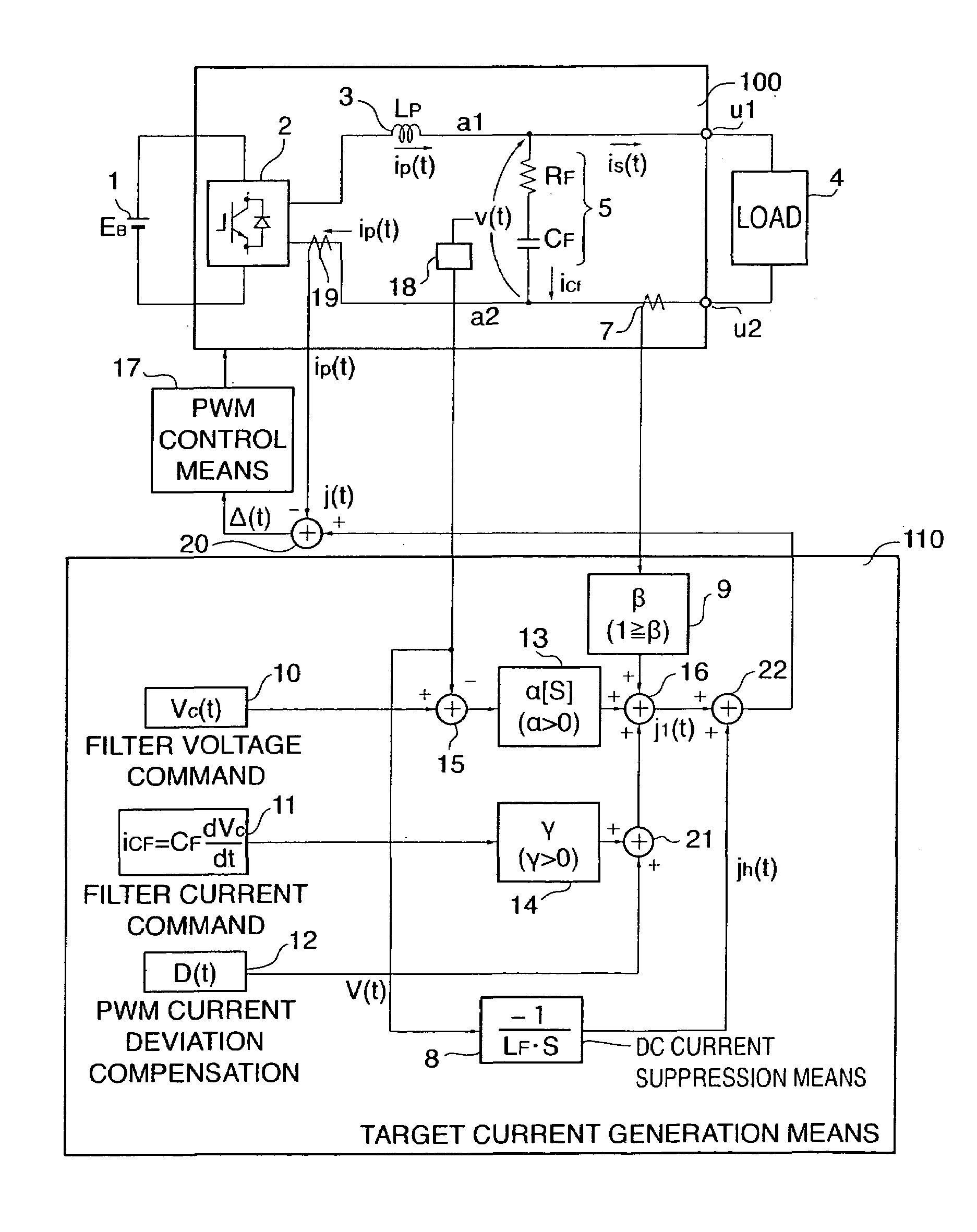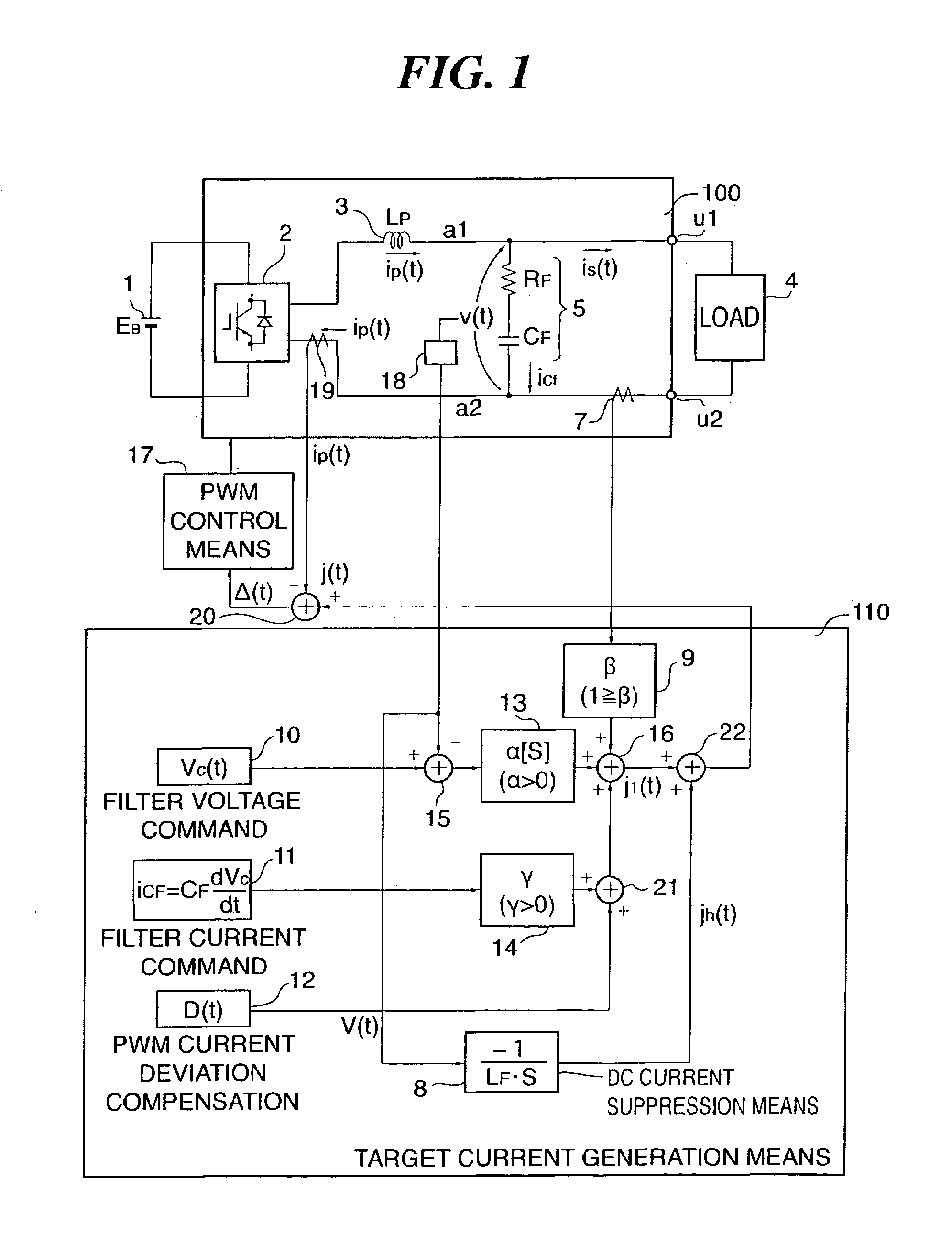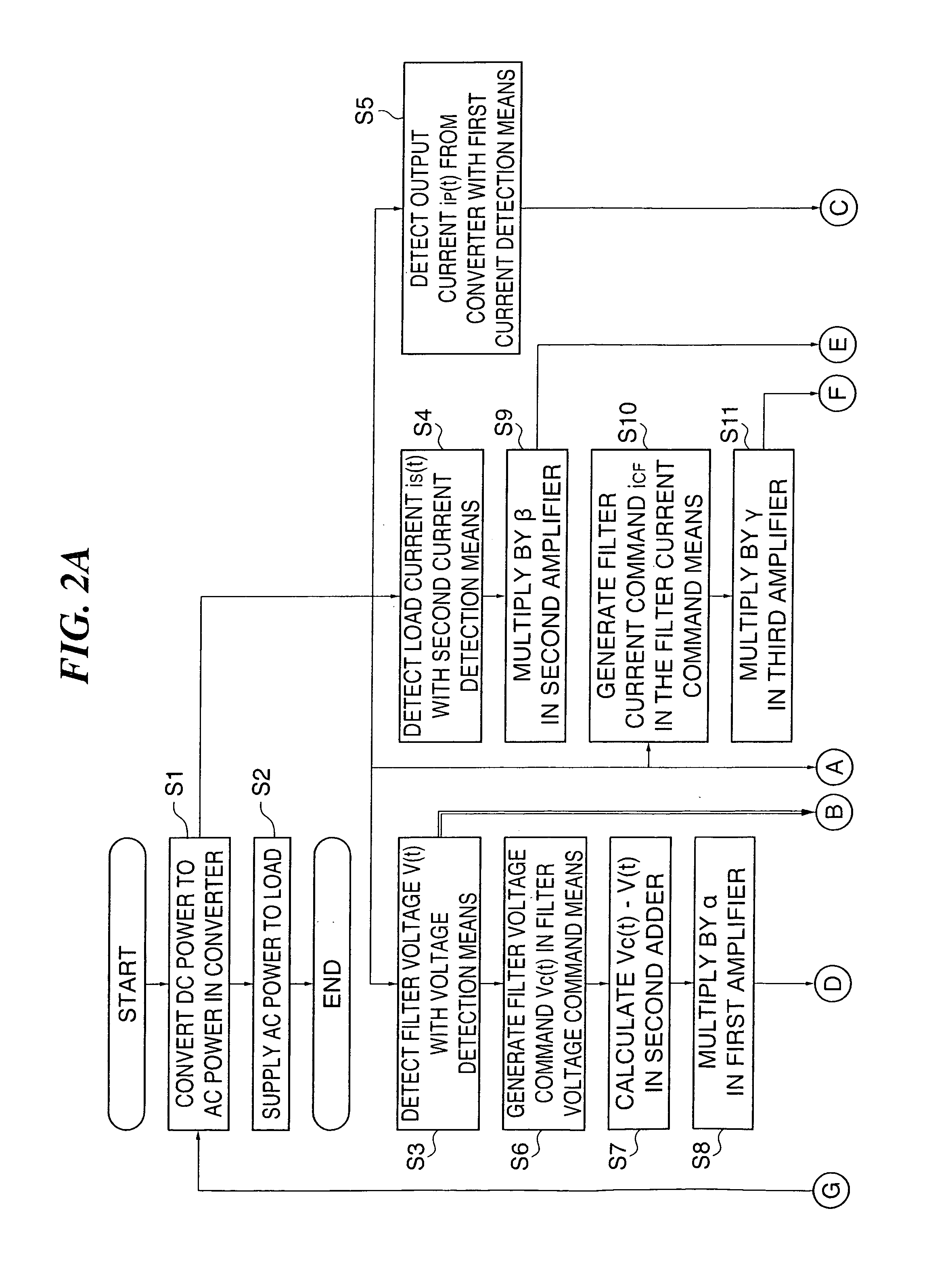Single-phase power conversion device and three-phase power conversion device
a power conversion device and single-phase technology, applied in the direction of power conversion systems, dc-dc conversion, instruments, etc., can solve the problems of slow response of conventional dc component suppression methods using saturable reactors or the like, unavoidably large devices, and difficult to improve the accuracy of dc component correction, etc., to achieve high accuracy, prevent biased magnetization of transformers, and suppress dc components easily
- Summary
- Abstract
- Description
- Claims
- Application Information
AI Technical Summary
Benefits of technology
Problems solved by technology
Method used
Image
Examples
first embodiment
[0111]FIG. 1 shows an example of the circuit configuration of a single-phase power conversion device according to a first embodiment of the present invention. Those parts having the same functions as those in FIG. 21 are designated in FIG. 1 by the same reference numerals. The differences from the device shown in FIG. 21 are that the output from the fourth adder 16 is changed from “target current” to “first target current jl(t),” and that a DC component suppression means 8 for receiving a filter voltage v(t) as a detection signal from the voltage detection means 18 and calculating a correction amount jh(t) for a target current j(t) and a fifth adder 22 for adding the correction amount jh(t) to the first target current jl(t) and outputting the target current j(t) to a first adder 20 are added in the target current generation means 110. The correction is carried out to suppress a DC component VD in the filter voltage v(t), that is, the output terminal voltage.
[0112]That is, the power ...
second embodiment
[0122]A three-phase power conversion device as a second embodiment of the present invention is next described. The approach for suppression of DC component in a three-phase power conversion device is basically the same as that in a single-phase power conversion device. In the case of a three-phase power conversion device, correction amounts jha(t) jhb(t), and jhc(t) are calculated for correction of three target currents ja(t) jb(t), and jc(t), respectively, and a DC component suppression approach similar to that for a single-phase power conversion device is applicable.
[0123]In the three-phase power conversion device, voltage detection means 18 detect line voltages vab(t), vbc(t) and vca(t) across three output terminals u, v and w the output terminal voltage v(t). The output current ip(t) detected by first current detection means 19 has three components ipa(t), ipb(t) and ipc(t), and the load current is(t) detected by second current detection means 7 has three components isa(t), isb(...
third embodiment
[0136]FIG. 7 shows an example of the circuit configuration of a single-phase power conversion device according to a third embodiment. Those parts having the same functions as those in FIG. 1 are designated in FIG. 7 by the same reference numerals and their description is omitted. The differences from the embodiment shown in FIG. 1 are mainly described. The differences are that a DC voltage detection means 6 is interposed between the filter circuit 5 and the second current detection means 7 and a DC component VD in the output terminal voltage v(t) is detected by the DC voltage detection means 6, and that the DC component suppression means 8 receives the DC component VD in the output terminal voltage v(t) detected by the DC voltage detection means 6 instead of a filter voltage detected by the filter circuit 5 and calculates a correction amount jh(t) for the target current. The DC voltage detection means 6, which is interposed between the filter circuit 5 and the second current detecti...
PUM
 Login to View More
Login to View More Abstract
Description
Claims
Application Information
 Login to View More
Login to View More - R&D
- Intellectual Property
- Life Sciences
- Materials
- Tech Scout
- Unparalleled Data Quality
- Higher Quality Content
- 60% Fewer Hallucinations
Browse by: Latest US Patents, China's latest patents, Technical Efficacy Thesaurus, Application Domain, Technology Topic, Popular Technical Reports.
© 2025 PatSnap. All rights reserved.Legal|Privacy policy|Modern Slavery Act Transparency Statement|Sitemap|About US| Contact US: help@patsnap.com



